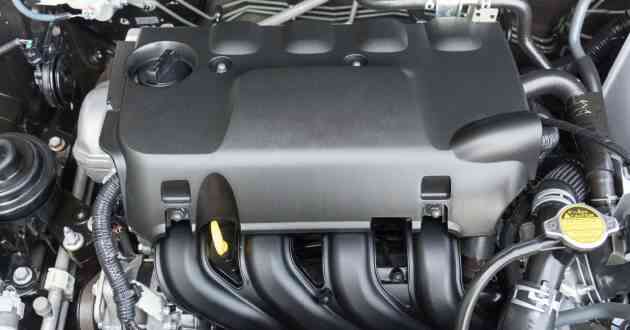Navigating Winters: A Guide To Help You With The Best Driving Experience
Winter is a season that might be beautiful, but it is also a time for change. Let's look at how to prepare your car for
Winter is mostly considered to be a fascinating time of the year, when the world is covered with a white glow. But on the other hand, this means a lot of navigation and driving problems for the person sitting behind the wheel. There are a lot of conditions and situations that arise throughout the season. In this comprehensive list, we will be looking at the list of challenges in the winter season, the safety checklist and some friendly tips to enhance the driving experience.
5 challenges faced during driving in winter
What are the most common challenges that drivers face during the winter season? Let's look at them.
- Vehicle malfunctioning: there is a need to keep your vehicle maintained, especially during the winter, as there is a chance that the warning light and other equipment may not be functioning properly. Keep your car checked; you do not want to end up with a broken car on a chilly night.
- Overspeeding: During a snowstorm, it could be tempting to move as quickly as possible, but you must take your time. Despite being legally within a driver's jurisdiction, this should still be on the list because it's an easy rule to forget. However, keep a note that whenever there is snow and ice on the ground, you should travel slowly.
- Slippery roads: The most obvious problem drivers face in the winter is having to drive over ice and snow. Winter navigation is more cumbersome on hills and valleys than on level ground. Bigger vehicles ought to approach these hills cautiously.
- Clogged filters: In cold temperatures, large cars have the potential to freeze and clog their gasoline filters. Some truck drivers prefer to idle their cars while they are stopped so that the inside heats up the filters and keeps them clear. If you start in a hotter area and proceed to a cooler one, the risk is greater. Because the fuel in warm climates is generally not treated with additives that stop gelling.
- Vehicle clusters: In the event of an icy winter, it is better to steer clear of traffic for as long as possible. It is advisable to maintain the greatest feasible distance from other cars. Keeping some buffer space in front and back of the vehicle,
Safety checklist for driving in winter
Let's have a peek at the driver’s checklist for ensuring safety during the winter season.
- Drive smoothly: Steer clear of sudden movements when travelling in the winter. To keep things under control, gently steer, accelerate, and decelerate. Especially on snowy roads, sudden movements might result in skidding or a lack of traction. If you discover yourself in a skid, turn your wheel in the desired direction.
- Keep proper space: while driving, make sure you are leaving proper distance between your car and the one travelling in front of you. Do not rush or try to overtake; you are not a part of the race.
- Keep on the blinkers: Use a maximum of four flashes when merging gently into the next lane when driving in the cold. You don't have to follow the other drivers around you. Keep your speed down and use your warning lights to let other drivers know that you are moving more slowly than they are when driving a truck across winter roads.
- Do not drive under extreme conditions: Do not drive under extreme conditions. Check the weather forecast so that you do not end up stuck in snowfall.
- Defrost the window: A quality ice scraper should be purchased and used to remove any ice or frost from your car's windows. Snow from your car's roof should also be removed, as it might fall onto your windscreen while you're driving. Clear visibility is vital for safe driving.
Enhancing driving experience during winter
Here are some tips to enhance your driving experience during the winter.
- Pack emergency kits: Especially in the cold, unforeseen events can happen. Maintain an automobile emergency kit as a precaution against unanticipated events. Like a blanket, flashlight, first aid supplies, cable jumpers, a tiny shovel, and nonperishable snacks, this pack should have everything you need. In the event of an emergency, being organised can be quite helpful.
- Keep a check on weather report: Prior to leaving, make sure you are aware of the most recent weather information. You may also stay informed about any changes in conditions or closed routes by regularly checking in with the base by radio, GPS, or phone calls.
- Invest in winter tyres: To improve traction on slippery and snowy routes, think about purchasing winter tyres. These tyres are designed to maintain their flexibility in cold weather, providing enhanced handling and grip. Since tyre pressure tends to decrease in colder temperatures, don't forget to check it frequently.
- Master defensive driving: winter driving necessitates preparation. Employ defensive driving strategies, such as keeping a safe trailing distance, steering clear of objects quickly, and paying attention to your surroundings. Remember that roads may be slick and visibility may be limited, necessitating greater caution.
- Stop when important: When driving becomes impossible due to extreme winter conditions, locate a safe place to relax. Whenever feasible, try to avoid stopping on the curves, as this significantly raises your risk of getting struck. Rather, drive slowly to a petrol station or some other 24-hour establishment and bide your time until the visibility gets better.
Conclusion
Successful winter navigation demands a trifecta of ability, care, and preparation. You can guarantee a more comfortable and secure winter driving experience by taking a moment to prepare your car, arm yourself with the necessary information, and practise safe driving methods. Remember that arriving at your destination safely is far more crucial than merely getting there.
A healthy engine is very important for any vehicle, so for those searching for a used engine and transmissions, do not forget to visit Used Engines. This is a perfect solution for your requirements.



